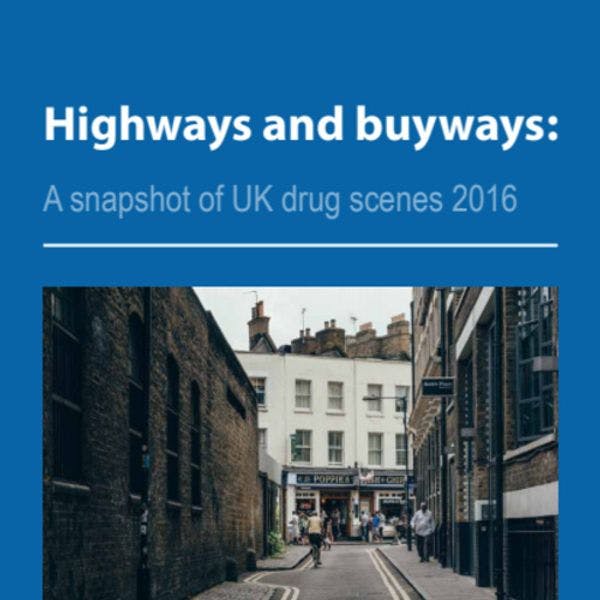Highways and buyways: A snapshot of UK drug scenes 2016
The idea of the survey is to get a snapshot in time of what is happening with UK street drug markets. Previous surveys were conducted as telephone interviews with local drugs workers, Drug Action Team staff and police officers with specialist knowledge e.g those working in drug squads. For this survey, drug workers and police officers again comprise the majority of informants excepting that the police input has come primarily from those officers designated as drug expert witnesses and members of the Drug Expert Witness and Valuation Association. Also this time, we have widened the net of respondents to include researchers, drug consultants and trainers and those with contacts at street level together with information culled from published academic papers and official reports. The survey was conducted during October-November 2016 with representatives from 32 organisations and officers from 13 constabularies mainly by telephone, but also email and face-to-face.
Drug scenes can vary enormously within one region or even one city so the survey can only take a broad sweep across the UK. Even so, we have tried to encompass a wide range of geographical areas and for this survey these include: Greater London, Liverpool, Manchester, Birmingham, Nottingham, Edinburgh, Glasgow, Cardiff, Swansea, Belfast, Bristol, Brighton, Blackpool, Bradford, Hartlepool, Sheffield, Lincolnshire, Newcastle and Tyneside, Stoke and the Staffordshire region, Essex and Kent (Southend, Thanet and the Medway towns); Somerset, Devon and Cornwall and East Anglia.
Key findings
- Unprecedented street purity levels for heroin, crack, powder cocaine and ecstasy.
- Headline goals for Psychoactive Substances Act achieved but new forms of SCRA street dealing and distribution putting vulnerable groups at risk as rough sleeping numbers increase.
- Some reports of young people using heroin to self-medicate from SCRA.
- Extension of drug distribution system known as county or country lines.
- Increasing numbers coming forward to agencies with cannabis as a primary problem.
- Continued reporting of widespread non-medical use of prescription and OTC drugs not necessarily confined to traditional drug treatment service groups.
Keep up-to-date with drug policy developments by subscribing to the IDPC Monthly Alert.
